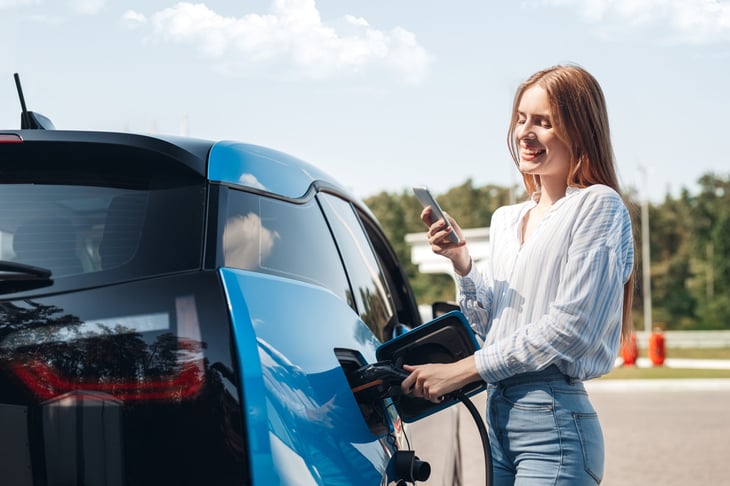
Editor's Note: This story originally appeared on The Penny Hoarder.
Gas prices are near an all-time high, averaging more than $4 a gallon across the U.S. The easy solution is to just drive less, but that’s not practical for most families. Instead, many drivers are considering switching to a hybrid or an electric vehicle to cut down their fuel costs — but how can you know which is right for you?
In this guide, we’ll explore hybrid vs. electric vs. plug-in hybrid cars — their advantages, disadvantages, and how to determine which is best-suited to your needs.
What Is a Hybrid Car?
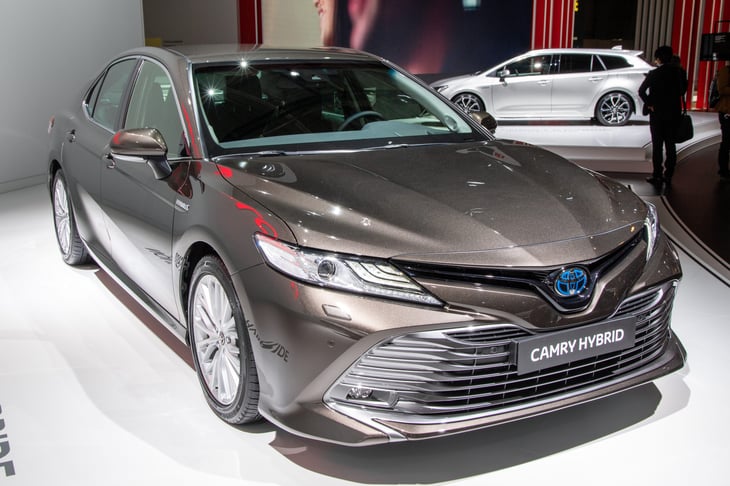
A hybrid car (or SUV or truck) is a vehicle that relies on both a gas-powered motor and an electric motor. You’ll still have to fill up at the gas station; in fact, running the gasoline-powered engine is the only way to power the electric motor.
Unlike true, 100% electric vehicles, hybrid models only have small lithium-ion batteries. When charged, these offer a short range of electric driving, but most of the driving done in a hybrid will come from the gas-powered internal combustion engine.
While driving, you can recharge a hybrid’s electric battery through regenerative braking. Every time you apply the brakes, the hybrid extracts and stores that energy and reuses it without gas power.
So while traditional gas cars are most efficient on the highway, with less stop-and-start driving, hybrid vehicles are actually more efficient in the city and in stop-and-go rush hour traffic, as they collect and reuse energy every time you brake.
The Toyota Prius is the most recognizable example of a hybrid, but nowadays automakers offer many of their popular gas-powered models as hybrid variants. Popular hybrid models include the Honda Accord Hybrid, the Toyota Camry Hybrid, the Hyundai Santa Fe Hybrid, and the Subaru Crosstrek Hybrid.
What Is an Electric Vehicle?
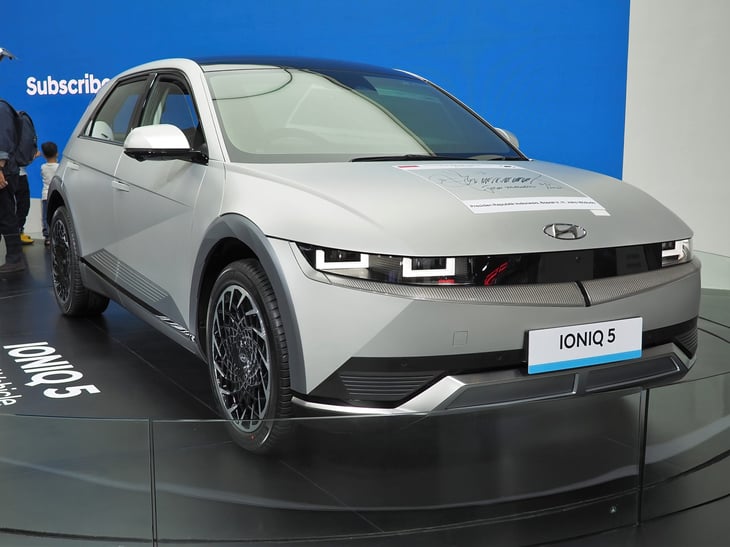
An electric vehicle (EV) runs solely on electric power generated by a high-voltage battery pack. Because there’s no gas to back up the electric motor if the battery runs out of charge, EVs are made with much larger lithium-ion batteries than hybrids, allowing for much longer ranges.
Unlike hybrids, fully electric vehicles do not have tailpipe emissions.
Charging an electric vehicle takes a lot longer than filling up a tank of gas. EVs generally require anywhere from six to 12 hours for a full charge. Most EVs do offer DC (direct current) fast charging, which can charge a battery to roughly 80% in as little as 30 minutes, but doing this often leads to faster battery degradation.
To charge an EV at home, you’ll need to have a professional install charging infrastructure that can cost several thousands of dollars. On the flip side, most EVs are eligible for a significant ($7,500) one-time federal tax credit, which more than makes up for the cost of the installation.
Some of the most affordable electric cars include the Nissan Leaf, the Chevrolet Bolt EV, the Hyundai Kona Electric, and the Ford F-150 Lightning.
What Is a Plug-In Hybrid Vehicle?

A plug-in hybrid vehicle (PHEV) has a gas-powered engine and an electric motor powered by a battery. PHEVs have large enough batteries that drivers can rely on electric power alone without the help of a gasoline engine. When the charge runs out, the vehicle switches over to the gas engine.
For this luxury, PHEVs require charging, just like electric cars. (Remember: The batteries in hybrid vehicles are charged by the gas engine and don’t need to be charged in between drives.) Owners of plug-in hybrids will need to install the same charging infrastructure at home as they would for a traditional electric vehicle.
Popular PHEVs include the Hyundai Ioniq, the Toyota Prius Prime, the Chrysler Pacifica Hybrid, and the Ford Escape PHEV.
Pros and Cons of Hybrid Cars

Hybrid vehicles have been on the market for several decades and continue to grow in popularity. In fact, in 2021 hybrid sales jumped 76% in the U.S., with a total of 801,550 sold, accounting for 5% of all light-duty vehicle sales, according to Reuters.
So what is drawing more people to hybrid models and what drawbacks should drivers anticipate?
Hybrid Vehicle Advantages
- Can travel long distances: Because hybrids rely on gas power, they can travel long distances without causing any electric range anxiety. When they run out of fuel, all it takes is a couple of minutes at the gas station to fill the gas tank back up.
- Affordability: Though more expensive than gas cars, hybrid vehicles are cheaper than plug-in hybrid and fully electric cars.
- No infrastructure needed: Electric vehicles and plug-in hybrids require the installation of charging infrastructure at your home, which is impossible for anybody who rents. But hybrid owners don’t need to worry about any special infrastructure.
- Regenerative braking: Regenerative braking allows hybrid vehicles to capture energy to power their electric motors. This makes city driving much more efficient than it is for cars powered solely by an internal combustion engine.
Hybrid Vehicle Disadvantages
- Fuel reliance: Though hybrids draw power from electric motors, they still very much need their gasoline engine, which means drivers are still reliant on fossil fuels and their surging prices.
- Lack of power: Hybrid engines are famously low power. If you’re looking for a potent engine that offers fast acceleration, you’ll be disappointed by any hybrid models you test drive.
- Cost to operate: Not only will you still have to pay for gas when you drive a hybrid, but you should also be prepared for higher-than-average maintenance costs. Though they may need less regular maintenance than gas-powered automobiles, it’ll cost more when you do visit the auto shop.
Pros and Cons of Electric Cars

Though hybrids are the most popular form of electrified vehicle, all-electric vehicles are gaining traction. Sales were up 83% in 2021, with a total of 434,879 EVs sold in the U.S. And with several automakers pledging to largely transition to EVs within the decade, they’re only going to grow in popularity. But there are advantages and disadvantages to them.
Let’s take a more in-depth look at the biggest benefits and drawbacks of electric vehicles.
Electric Vehicle Advantages
- All-electric range: Drivers looking to cut out fossil fuels in the wake of the growing climate crisis can now get EVs that promise hundreds of miles of range on a single charge. And in doing so, they’ll produce zero tailpipe emissions and offer tremendous savings on fuel.
- No routine maintenance: EVs famously don’t require oil changes or air filter replacements. While you still need to rotate the tires, EVs largely don’t need scheduled maintenance, which could save you hundreds of dollars each year.
- Tax credit: Most EVs still qualify for the federal tax credit ($7,500) when bought new, and many states and cities offer more local incentives to EV buyers.
Electric Vehicle Disadvantages
- Coal reliance: While it’s true that EVs don’t have tailpipe emissions, they still rely on electricity, which is largely generated by burning coal. This process is also harmful to the environment.
- Charging infrastructure: If you want to charge your EV at home, you will need to pay to have charging infrastructure installed. This can cost several thousands of dollars and isn’t an option for renters or city dwellers — unless they’re lucky enough to live near a public charging station or in an apartment building that offers one.
- Slow charging times: While most EVs offer DC (direct current) fast charging in roughly 30 minutes, the typical time it takes to recharge an EV’s battery 100% is six to 12 hours. This makes an EV impractical for a longer commute or road trip.
- Cost: Though there are economy options like the Nissan Leaf, electric vehicles are typically more expensive than hybrids and plug-in hybrids. They are also roughly 25% more expensive to insure than gas-powered vehicles.
Pros and Cons of Plug-In Hybrid Vehicles
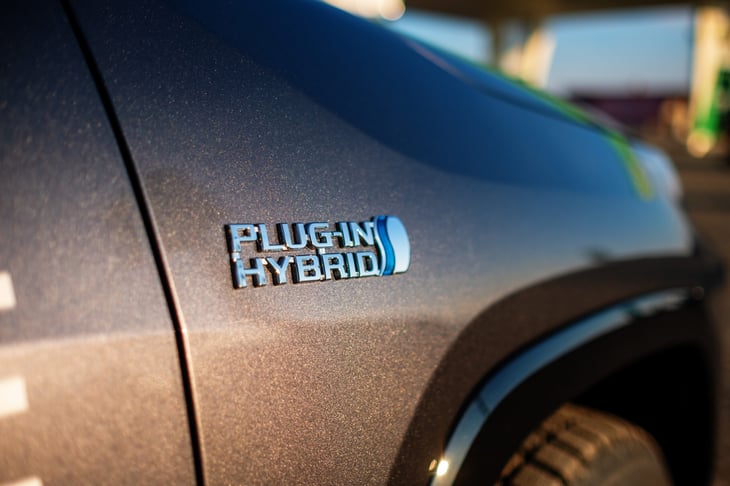
As a combination of hybrid models and EVs, PHEVs would seem to offer the best of both worlds. And while there are a lot of pros to driving a plug-in hybrid, PHEVs have a fair share of cons as well.
Let’s take a more in-depth look at the biggest benefits and drawbacks of plug-in hybrid vehicles.
Plug-In Hybrid Advantages
- Versatility: Plug-in hybrids can rely solely on electric power, but when you need to go longer distances they can seamlessly transition to gas power. If you regularly travel short distances and can charge at home between trips, you might be able to go days or even weeks without relying on gasoline, which could mean months between fill-ups at the pump.
- Tax credit: Though plug-in hybrids are not fully electric cars, they are still eligible for various tax credits and incentives.
- Low maintenance costs: Despite being somewhat complex (with both electric motors and internal combustion engines), plug-in hybrids, like EVs, are cheaper to maintain.
Plug-In Hybrid Disadvantages
- Fossil fuels reliance: To truly take advantage of the convenience offered by plug-in hybrids, you have to be OK with depending on traditional gasoline. That makes PHEVs less earth-friendly than EVs, and it also means you’ve got to budget for rising gas prices.
- Charging infrastructure: Because you still need to plug in your PHEV to charge the battery pack, you’ll need to pay to have charging infrastructure installed at your home. That makes PHEVs inaccessible to renters who aren’t lucky enough to have access to a charging station.
- Less interior space: Because of the multiple powertrain components (larger battery, electric motor, and gas motor), interior space often suffers in plug-in hybrids. Whether it’s less passenger volume or cargo space, PHEVs make you sacrifice space somewhere.
Hybrid vs. Electric vs. Plug-In Hybrid: Which Is Right for You?
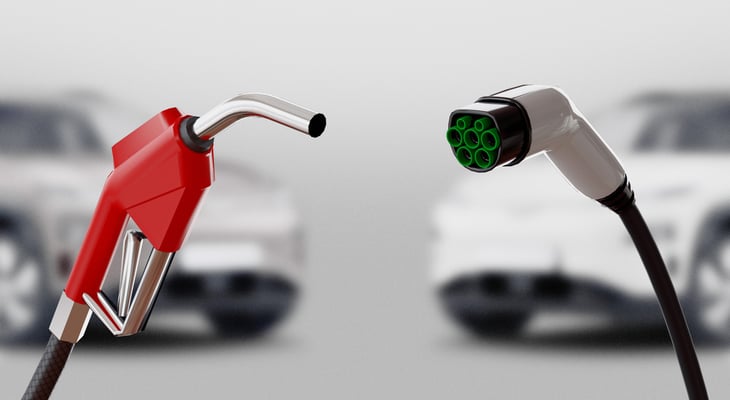
Hybrids, electric vehicles, and PHEVs all offer drivers a cleaner alternative to traditional gas-powered cars. But determining which one to drive off the dealer lot depends largely on your own budget, living situation, and driving needs.
Buy a Hybrid If …
- You often travel long distances.
- You don’t have a place at home to install charging infrastructure.
- You’re shopping for an energy-efficient vehicle on a budget.
Buy an Electric Vehicle If …
- You want a truly 100% electric-powered car.
- You won’t use your vehicle for longer distances (or have another car you can use for road trips).
- You want to take advantage of the federal tax credit.
- You have a place to install charging infrastructure or have easy access to charging stations.
Buy a Plug-In Hybrid If …
- You want an electric-powered vehicle but have range anxiety about true EVs.
- You have a place to install charging infrastructure or have access to charging stations.
- You want to “test the waters” before committing to a fully electric vehicle.





Add a Comment
Our Policy: We welcome relevant and respectful comments in order to foster healthy and informative discussions. All other comments may be removed. Comments with links are automatically held for moderation.